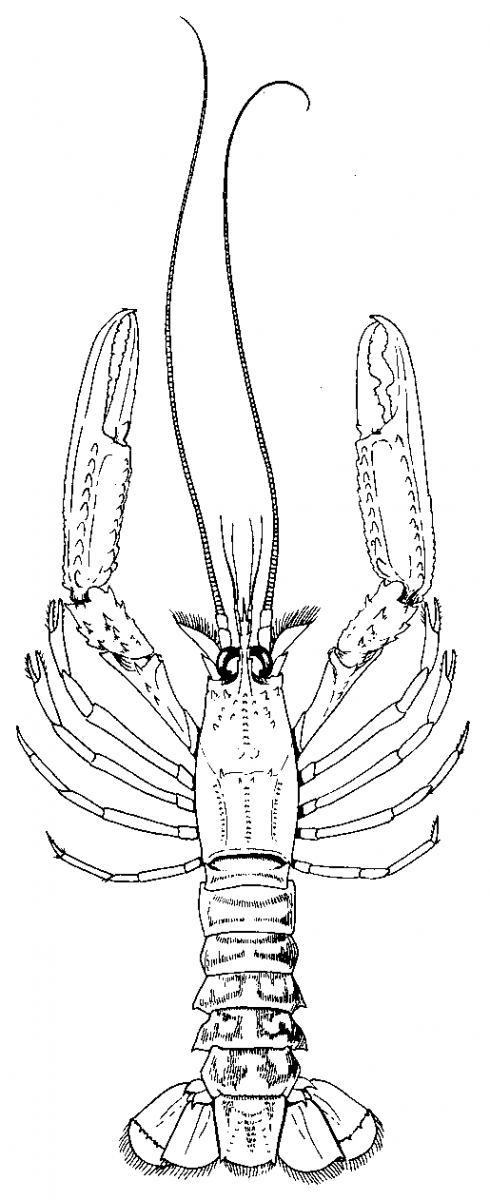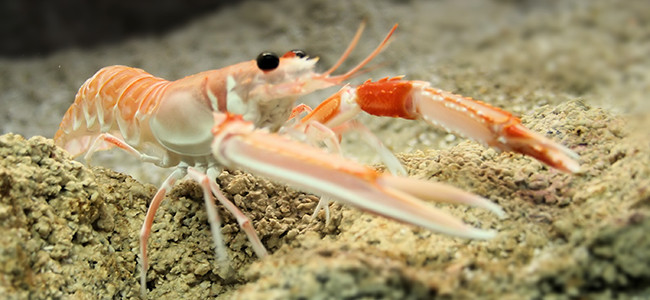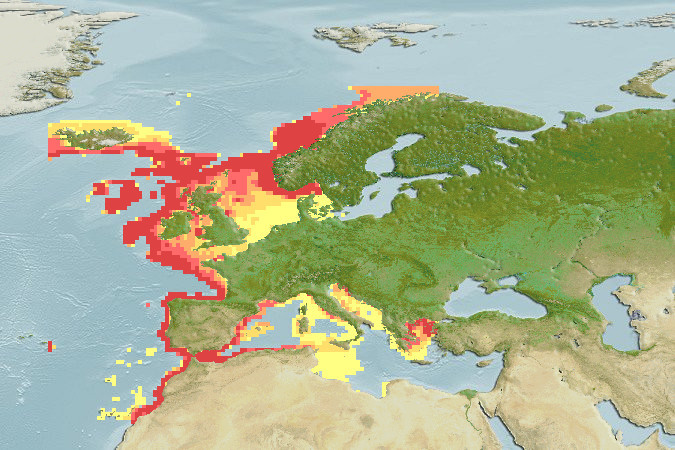Nephrops norvegicus, commonly known as the Norway lobster or scampi, is a decapod crustaceans belonging to the family Nephropidae, the same group as lobsters. The scientific name ‘Nephrops‘ comes from the Greek ‘nephros‘ meaning kidney, referring to the shape of some internal parts of its body, while ‘norvegicus‘ refers to its first identification in Norwegian waters. Norway lobsters inhabit the northeastern Atlantic, from Iceland and Norway to Portugal and the western Mediterranean, living on soft, muddy seabeds where they dig burrows at depths ranging from 20 to 800 meters.

In terms of morphology, Nephrops norvegicus has a slender, elongated body, typically reaching 10 to 20 cm in length, though some individuals can grow up to 25 cm. The body is covered by an orange or pale pink exoskeleton, with white spots on the claws. These claws, although long and thin compared to other crustaceans like the European lobster, are symmetrical and equipped with small spines. The cephalothorax is covered by a carapace with a distinctive central ridge and spines on the front, just before the sharp, elongated rostrum. The Norway lobster can be easily distinguished from similar species such as the European lobster (Homarus gammarus) due to its smaller size, lighter coloration, and the shape of its claws.
Nephrops norvegicus is a predator and scavenger. It primarily feeds on small fish, marine worms, molluscs, and other benthic invertebrates, which it captures with its claws or finds while digging through seabed sediments. Norway lobsters are nocturnal and spend most of the day in their burrows, emerging at night to forage. They also play an important role in recycling organic matter in benthic ecosystems by consuming dead animal remains.
Reproduction in Nephrops norvegicus occurs once a year, usually in spring or early summer. After mating, females carry the fertilized eggs attached to their pleopods (appendages located on the abdomen) for several months. Egg development depends on water temperature, but larvae typically hatch in late winter or early spring. The larvae go through several planktonic stages before settling on the seabed, where they develop behaviors similar to those of adults.
An additional fact about Nephrops norvegicus is its economic importance, as it is one of the most valued and heavily fished crustaceans species in Europe. It is mainly caught using trawl nets, although this fishing method has been controversial due to its impact on the seafloor and bycatch. Because of high commercial demand, regulations are in place to limit its harvest, including minimum landing sizes and the protection of berried females to ensure sustainable population levels.
Photos:


 from
from